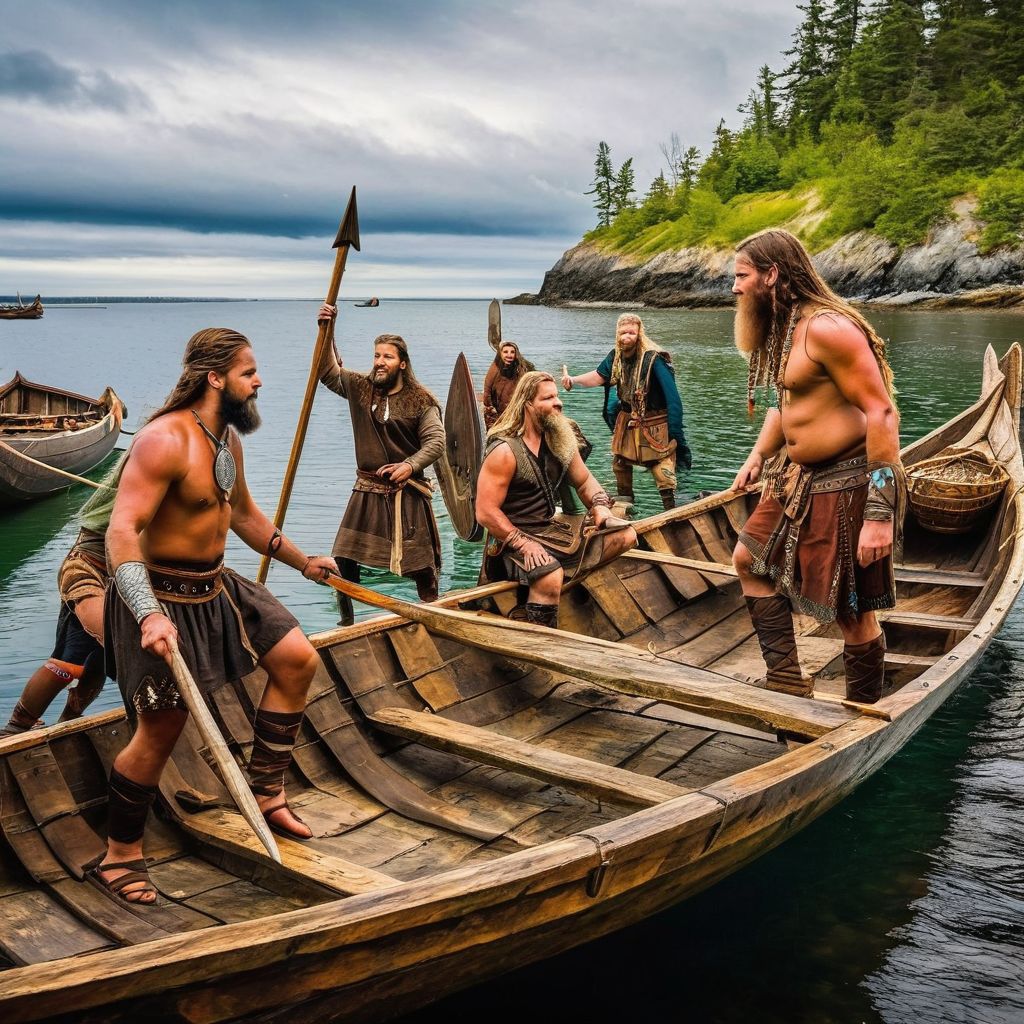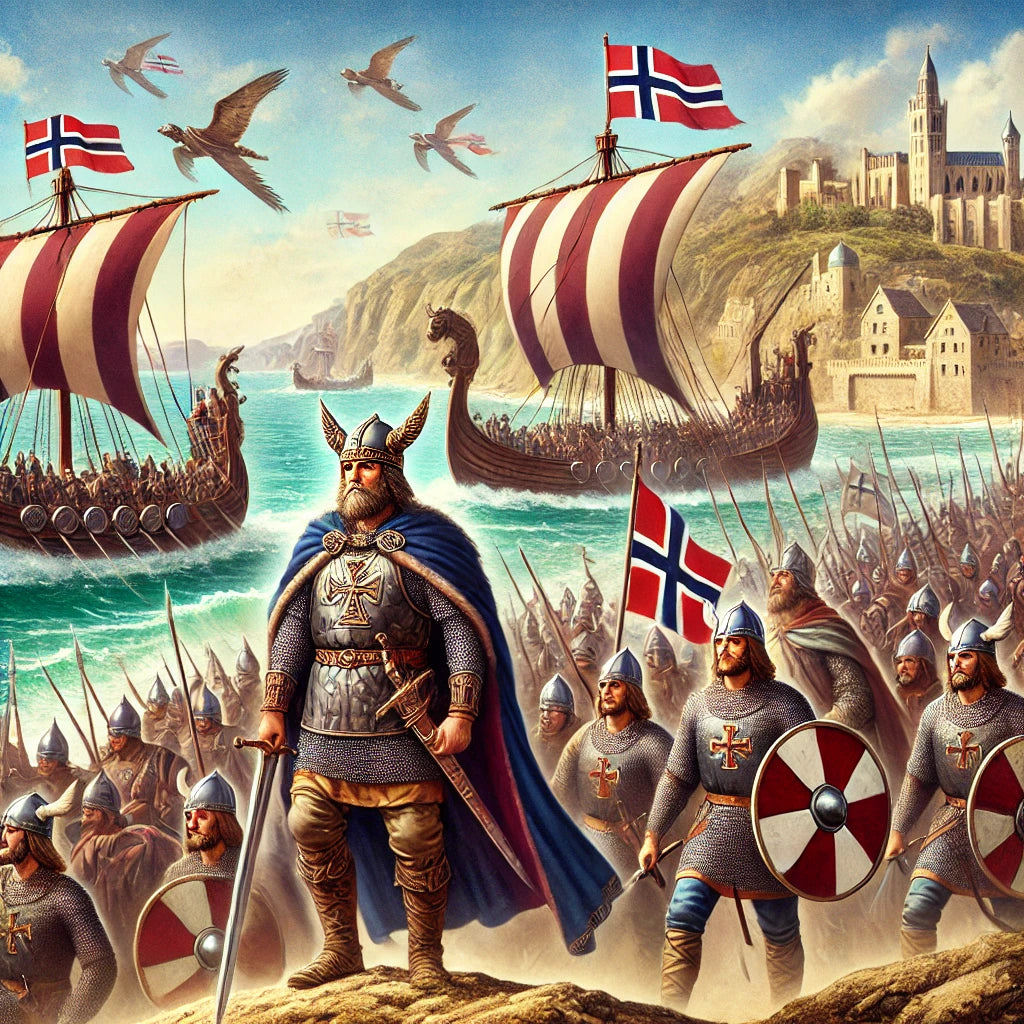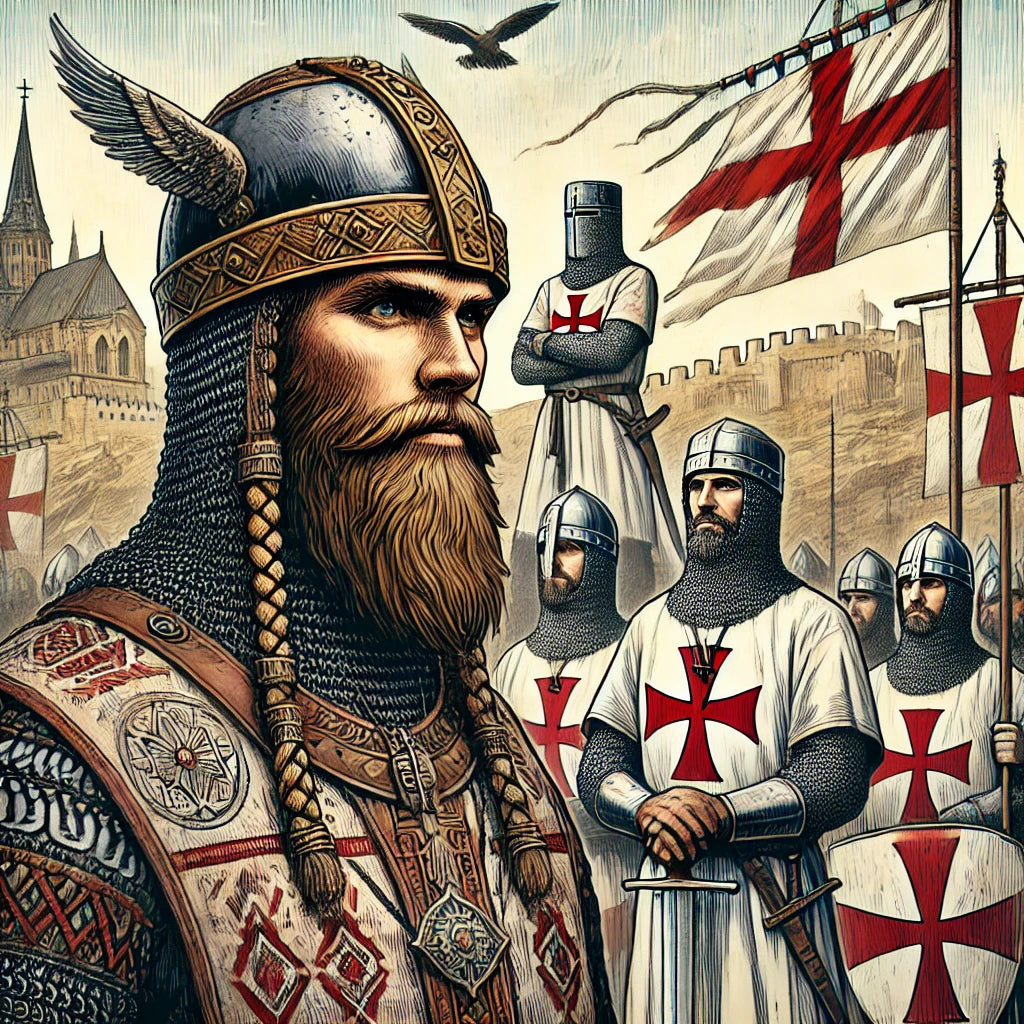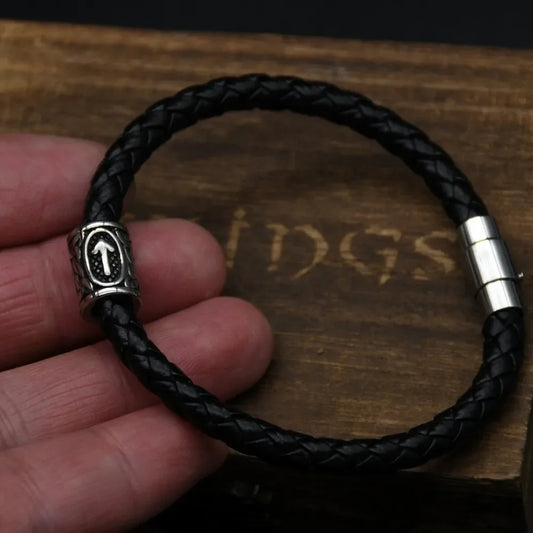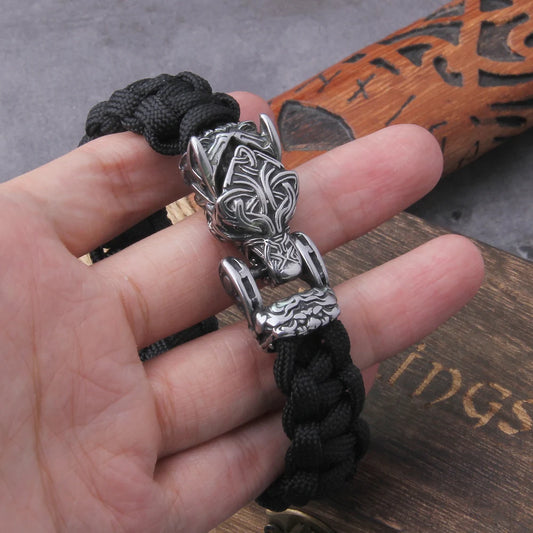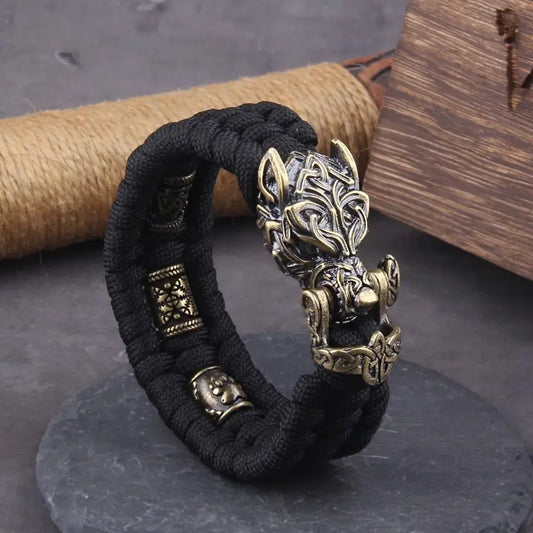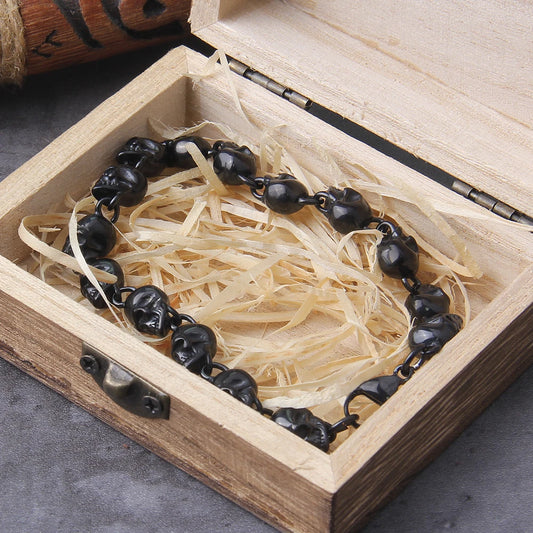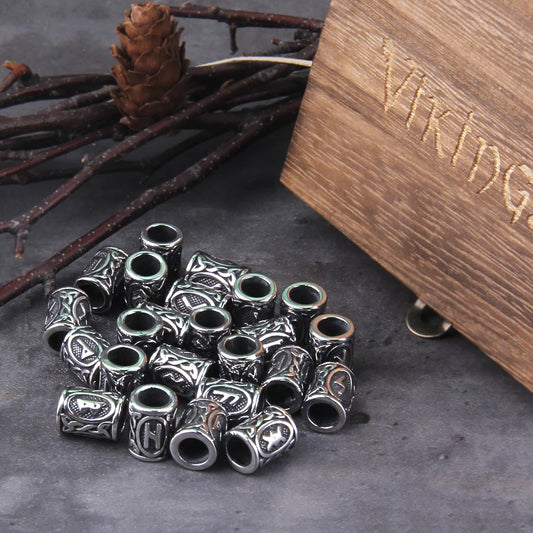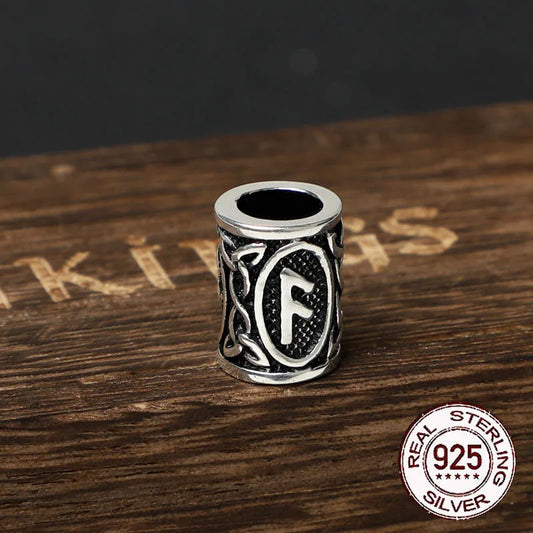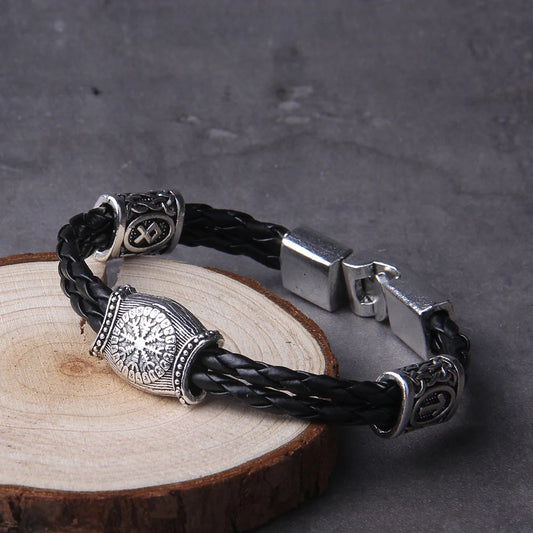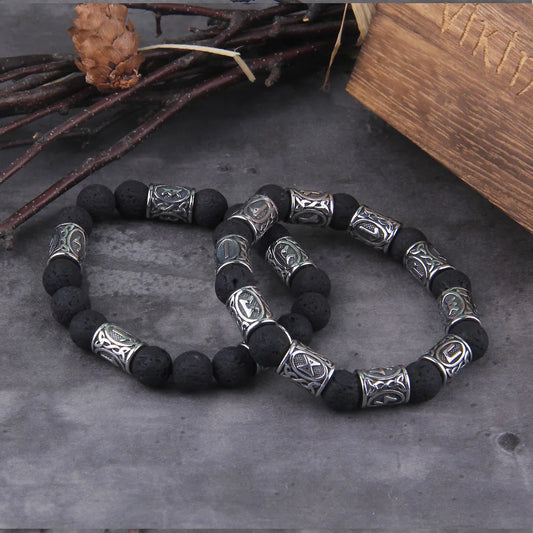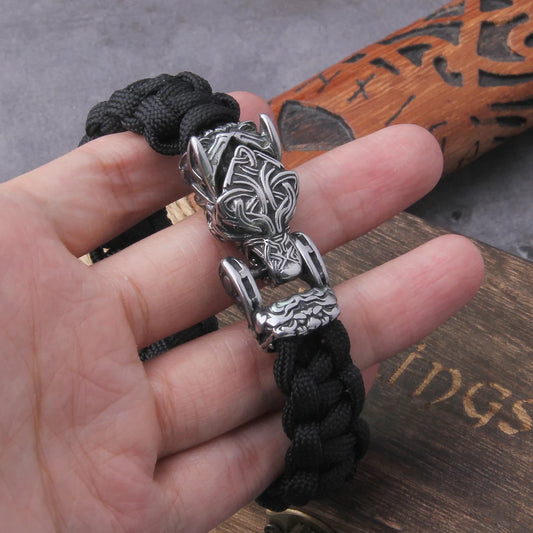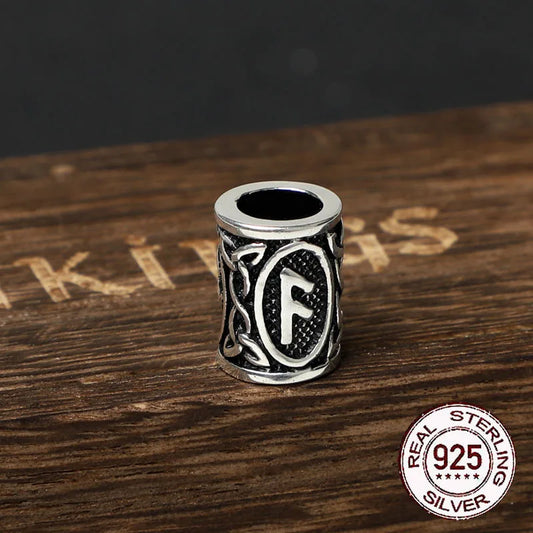Art in the Viking Age is a collective term for the artistic styles that flourished in the Nordic countries and the areas of northern Europe where the Vikings settled from the end of the 8th century to around 1100 AD.
The surviving works of art include both material works, such as carved wooden figures, jewelry, carved stones and, in rare cases, tapestries, and literary works, such as poems.
The art of the Viking Age was largely based on that of the Iron Age, and many elements, such as the many animal motifs and stylized figures, are direct continuations of the styles of the earlier period. Viking art thus represents the youngest stylistic periods of Germanic ornamental art.
Increased international communication in the Nordic countries also led to increased foreign inspiration; for example, in addition to early Celtic influence, Romanesque elements can also be found in Viking art.
Nordic art remained common to the Nordic countries for a long time, despite the foreign influence, and retained many distinctive features: this was true of both the visual arts and poetry, although the latter survived longest, as skaldic art was still prominent among the upper classes in the first half of the 13th century. During this period it was mainly continued by Icelandic bards, the most famous of whom was Snorri Sturluson.
Viking Visual Arts and Handcrafts
In the Viking Age, both craftsmen and artists were referred to by the same word, smed (Norse: smidr), sometimes put together with the material they worked in; a carpenter, for example, might be referred to as a tresmidr. Weaponsmiths and shipsmiths had high status in Norse society, but we do not know what the status of jewelers and other craftsmen was.
Elaborately crafted jewelry made of precious metals was used to signal wealth and prestige. Gold and silver were used for the most distinguished objects, either in their pure form or embedded as decoration in other materials.
Precious metals were imported from the rest of Europe - either as jewelry or coins - and remelted. In the Roman and Germanic Iron Ages, large quantities of gold were imported, and some of it may have been recycled in the Viking Age. Objects from foreign countries are usually made of gold or silver, ornate objects were luxury goods (high value luxury items were easier to transport).
Jewelry was also made from less precious metals, especially bronze, which was gilded or silvered to give the appearance of being made from more expensive materials.
During the 10th century, production sites for particularly exclusive items were established in Denmark. Until then, the most exclusive jewelry had been made abroad. Otherwise, local craftsmen had only produced objects in cheaper materials and using simpler techniques.
Throughout the Viking Age, Nordic art largely retained its distinctiveness from the artistic traditions of the rest of Europe, but with clear international trends. The archaeologist Iben Skibsted Klæsøe explains the foreign influence by saying that this era was characterised by a high degree of international contacts; from the beginning mainly traders who brought back both objects and ideas. A process that began even before the traditional start of the Viking Age in 793.
During the High Middle Ages, Western European styles became more dominant, with the Romanesque style becoming the most widespread. Together with rune stones, images are the most important sources of pre-Christian myths and rituals in Viking religion, as scenes from later narratives can often be found in images.
The study of pictorial representations therefore constitutes a key position in the study of religion, as they make up the vast majority of preserved sources from the contemporary period. In some cases, works of art can also be used as historical sources, e.g. monuments from the 10th century bear witness to the establishment of a central power.
Artists and craftsmen of the time were usually anonymous, and the only people who could sign their works were the rune artists. Trends in arts and crafts were transmitted by travelling craftsmen (Nordic and European), traders, missionaries and warriors.
The art of the time was characterised by contrast, colour and harmonious movement. The style was showy, but the best artists executed partial elements with the same care as the whole, so that the ornamentation can only be seen very closely.
Overall, a certain visual language and style was common throughout the period. The same applies to the motifs; new ones were not simply invented. Alexandra Persch therefore suggests that the images could have been produced by specialists.
The imagery was different from that of modern times, when events that were otherwise chronologically separated in a narrative were often rendered so that they appeared simultaneously on the picture field, so that the individual scenes of the narrative were put together to function as a whole.
The majority of decorations were found on utilitarian objects, and a common motif throughout the period was stylised animal figures, often in complex patterns.
The animal as a motif has a long tradition in European art, but Nordic art is characterised by a close relationship between decoration and object, with the ornamentation executed as an integral part of the object.
In most cases the patterns were non-figurative and their meaning is therefore difficult to interpret. Preben Meulengracht Sørensen has suggested that they may have had no significance other than as ornamentation.
The decoration with griffins, like the pictures illustrating narratives, usually shows a moment in the middle of a scene where it is up to the viewer's imagination what happens next; for example, a predator about to pounce on another animal.
Plant motifs flourished in the first half of the Viking Age, but disappeared again around 1000.
International inspiration of Viking Art
Viking art has clear characteristics that distinguish it from the art traditions of neighbouring cultures.
One example is the bowl clasps, which are the most widely used jewelry from the Viking Age. They were used as buckles on the bodices of women's dresses. The decoration on them was conservative and few stylistic changes can be traced over a period of about 400 years.
But Iben Skibsted Klæsøe has collected a number of other stylistic features whose origins can be traced to specific areas in the Viking world. For example, the geometric patterns and animal ornaments are found in Irish book illustrations from around the 6th to 8th centuries. They are characterized by twisted and braided animal bodies and some plant motifs.
Another widespread group of finds are the tripartite fibulae, which, together with the bowl clasps, were standard female jewelry.
They were used to gather and hold a shawl or similar on the chest. Within this group, several variations and fashions inspired by south-west European traditions have been found. In the Frankish Empire, this type of fibula was used as a sword hilt, and the first examples were probably brought home by men who had served as mercenaries and used as gifts for women.
However, uniqueness was not a characteristic of Nordic art, as European art in the early Middle Ages was generally characterized by great local variations. Skibsted Klæsøe notes that the nature of objects apparently had some influence on the form of decoration chosen. For example, vines and acanthus leaves, which are gradually gaining ground in Nordic art, were initially used only on the three-lobed fibula pendants.
The main foreign trends were symbolic Christian paradise figures in the form of lions, birds and vines, as well as the imperial/divine acanthus plants.
The most widespread European style in the early Middle Ages was the Insular style, which had its roots in the Irish-Anglo-Saxon tradition but spread throughout Western Europe through monasteries.
And another British technique that spread to the North was ring pins with silver filigree and inlaid amber or glass. From the British Isles, there was even an influence from Middle Eastern traditions. In the 7th and 8th centuries there was a clear Syrian influence in the English clergy due to the establishment of several Syrian monastic colonies, including Lindisfarne.
The background was that several Syrians were elected as popes, and they brought many monks with them to Western Europe. These monks brought with them, among other things, a slightly more graceful style with motifs of vines and birds depicted in pairs in the branches. In the Gospel of John, chapter 15;1, the vine is explained as a symbol of the Church.
This meant that the English animal style approached oriental styles and became more naturalistic. The animals had elongated bodies, but not distorted as in the Nordic style. These elongated forms are found on Nordic bowl buckles from around the 9th to 11th centuries, where they were often combined with traditional Nordic griffin animals.
Skibsted Klæsøe believes that although Christian motifs were thus often present in the design language, they were used without their real meaning being fully understood until well into the 10th century.
From the end of the 9th century to around the 950s, the Frankish acanthus style appears in Nordic decorations. This style had flourished in the Frankish Empire under Charlemagne in the 8th to 9th centuries.
It is based on Greco-Roman traditions and is known, for example, from capital decorations on columns of the Corinthian type. The motifs are based on Mediterranean flora and named after acanthus The classical inspiration in the art of Charlemagne's empire reflects the emperor's intention to recreate the Roman Empire.
The artistic environment he built was part of the Carolingian Renaissance. This environment was international, and influences therefore came from many places, including Syria and the Byzantine Empire, as well as the rest of Western and Southern Europe.
For example, lion motifs of Byzantine origin spread throughout northern and western Europe in the early 8th century. In the Nordic countries, lions were quickly incorporated into the local style.
It has been suggested that it was refugees from the iconoclastic strife who may have brought decorated gene stands and thereby inspired new motifs.
Fibulae inspired by Frankish style from c. 9th century are concentrated around Uppland in Sweden, suggesting strong links between this area and Central Europe at the time.
Both the Middle Eastern vine and Frankish acanthus styles became established in the Nordic countries about 100 years after they emerged in their native countries. In the latter half of the 9th century, Frankish acanthus and British vine ornamentation merged into continental art. This new blend later inspired plant decoration in late Viking Age art.
Viking Art Styles
Broa-Oseberg Viking Art Style
The Broa-Oseberg style is considered the first period of Viking art. This style extends from the second half of the 8th century to the middle of the 9th century. It takes its name from a man's grave in the village of Broa, Gotland, Sweden, and a woman's grave in Oseberg, Norway.
At Broa several bronze pieces were found that were part of horse bridles. At Oseberg, site of the richest Viking grave in history, the woman's body was placed inside an ornate vessel, inside which was a large grave offering, including textiles and a large number of carved wooden objects, such as a cart, sledges, bed frames and ornaments with animal heads.
In this style, ambiguous and zoologically indeterminate animal figures appear, with curved bodies and projections in the form of tendrils. On their bodies prehensile limbs can be distinguished, which are made from the body of another animal or their own. The Oseberg textiles are among the few surviving pieces of cloth from Viking art.
Borre Viking Art Style
The Borre style (first half of the 9th century - second half of the 10th century) owes its name to a burial ship found in Borre, Norway.
It evolved from the Broa-Oseberg style. It is characterized by a braided pattern in the lines, similar to chain links, forming symmetrical figures. It increases the number of beasts with prehensile hands and their development.
The pieces reach greater fineness in the technique of filigree and granulation. In addition to Borre (mainly horse bridle pieces), there are also important examples of brooches in Denmark and Sweden.
The style spread to the British Isles, where it would become quite popular. There are several monumental stones of this style in the Isle of Man, as well as in Great Britain and Ireland.
Jelling Viking Art Style
The Jelling style was named after the discovery of a silver ciborium in the royal burial mound at Jelling in Denmark, where probably the first tomb of King Gorm the Old was located. Brooches are mainly preserved in Denmark, Norway and Sweden, in England (in the York area), on the Isle of Man and in Orkney.
Characteristic are the S-shaped animal figures, with the head in profile and similar to that of a dragon, open jaws sometimes showing fangs and a typical fold over the upper lip.
The bodies of the animals are more coherent in shape than those of the Borre style, although there are often intermediate forms between the two styles. They have elongated, curved bodies, with ladder-shaped longitudinal decoration and spiral-shaped projections similar to vegetal tendrils; it is possible to distinguish some extremities; the bodies of the different animals intertwine with each other.
Mammen Viking Art Style
The Mammen style emerged gradually and imperceptibly from the Jelling style and the two styles are often not differentiated in the transition period. Some even consider it a transition between the Jelling style and the Ringerike.
Among its masterpieces are the Mammen axe, in Jutland, with a bird figure and a human face, and the Bamberg chest (supposedly belonging to the Empress Cunegunda), richly decorated in walrus ivory.
In the mature form of this style, the animals take on more conspicuous and substantial forms; the spiral forms are larger in size. For the first time, clearly differentiated vegetal forms appear, in the form of shoots, tendrils and foliage outlines.
Ringerike Viking Art Style
The Ringerike style coincides with the expansion of the tradition of erecting rune stones. It takes its name from an archaeological site in the province of Buskerud, where runestones with animal and plant ornaments were found. It spans approximately from 1000 to 1050.
Characteristic of the style is the presence of animal elements, well-defined plant forms (tendrils, leaves), or geometric figures (mainly circles and spiral figures, but also triangles) that are grouped together or surround a larger animal figure.
Among the animal forms, lions and birds predominate, but human forms also appear. The animals are often "crowned". For the first time, crosses and palmettes appear in the decoration.
Another aspect is the importance of symmetry. The Ringerike style was nourished by Anglo-Saxon and Ottonian art. It was quite common in England and Ireland, where it was enriched by local artistic traditions.
Urnes Viking Art Style
The Urnes style was so named by the archaeologist Haakon Shetelig in 1909, who took as his prototype the decoration of the north portal of the wooden church of Urnes. The style extended from the second half of the 11th century to the first half of the 12th century.
It is an elegant and vigorous style. The animal figures are slender, with limbs, when present, rather more slender than the trunk; long neck and stylized head, with almond-shaped eyes.
Often animals appear in the form of a band or snake, and the figure of the dragon also appears, possibly based on Anglo-Saxon models.
Another feature is the evident asymmetry and interplay between thick and thin lines. The style also includes interlacing patterns between thin S-shaped or 8-shaped lines.
The Urnes portal is a richly carved relief in wood from the mid-11th century, and is the only complete piece of the style in Norway; other further examples in Norway, an important one being the wooden church portal at Torpo.
It spread throughout the Nordic countries: in Denmark, for example, about 100 objects and fragments of the style have been found. It is related to Celtic and Anglo-Saxon art. The Lindisfarne Gospels, a manuscript illustrated by Anglo-Saxon monks in the 7th century, shows the same spiral patterns as the Urnes portal.
Norse Artistic Literature & Poetry
Literature was transmitted orally, even if writing was available. Runes were not suitable for writing down long texts. However, written culture was not unknown, as it existed in several neighbouring countries.
Preben Meulengracht Sørensen believes that Viking Age runic monuments can be interpreted as the beginnings of a writing culture, but that the reason it did not appear in the Nordic countries until after the religious change was that there was simply no need for it before then.
Poetry had an important position in Norse culture, and skilled bards had a high status in society, they were authorities in everything related to language and communication.
Throughout the period, there was also a close link between poetry and images; with its elaborate and formalist expression, in which form alone could give content to a stanza, shield poetry provided a linguistic counterpart to the meandering pictorial style of the time. The genre contained many conventions, yet left plenty of room for innovation for the skilled poet.
Myths were also retold through poetry, but here a simpler and more conservative form of poem was used, called edad poems. In this type of poem, the emphasis was on simplicity and the communication of collective knowledge. Unlike the shield poems, they were not attributed to an original author, but were seen as originating in the distant past.
Preben Meulengracht Sørensen believes that the genres and metrics that characterise the edda form were developed in the 9th century, and that the poems that have survived to the present day were probably written around that time. However, there was never one fixed form of the individual poems until they were written down in the Middle Ages, after they had lost their religious significance.
Norse poetry presupposed that the listener was already in possession of mythological and historical knowledge, as the narrative was often conveyed in fragmentary form. The narrative itself usually consisted of a single scene or scenes, taken out of the mythological context. Several poems had a frame narrative in which the narrator addressed the audience directly. In general, there were two types of edad poems, the poems of knowledge and the epic poems.
Literature and Art Visuals
In Norse culture there was a very close connection between visual and oral art, images carved in stone, carved in wood, woven on carpets, painted on wood, etc. have certainly served as inspiration for poets and myth tellers, who wrote from the images in which the central scenes of the myths were depicted.
For example, the story of Thor and the Midgard Serpent is preserved in five different shield poems, in the edda poem Hymiskvidjá and in the Younger Edda, but also from several picture stones. In the five poems, the story is told from the very same motif depicted on the picture stones, where Thor has the worm on his hook while he has raised the hammer.
A stone cross from Kirk Andreas on the Isle of Man is another example of mythological imagery. Here is a scene from The Woof's Divination reproduced, which was used as an image of chaos and destruction, to illustrate death.
Another image that could serve as inspiration for poets comes from Hunnestad from around the year 1000. It shows a person riding a wild animal and using a snake as a reins.
It has traditionally been interpreted as the giantess Hyrrokin, but Preben Meulengracht Sørensen points out that similar figures are known from other myths; and that the motif must have had an independent meaning that could be used both in isolation and as part of another narrative; for example, Snorre Sturlasson may have drawn inspiration from such images for the scene of Hyrrokin arriving at Baldr's funeral in his own tale.
Not all images therefore necessarily referred to particular myths, but were motifs that could be woven into different stories. In other cases, the connection is clearer, such as the images of Thor and the Serpent.
Similarly, several portraits of Sigurd Fafnersbane are known. Images were clearly important to the ancients, and many ornate objects have been found. Alexandra Persch suggests that they were perhaps seen as a more important or accurate way of conveying mythical material than text.
Norse Religious Arts
Images and decorations are, together with the runes, the most important sources of Nordic religion from pre-Christian times, as they represent the only contemporary relics of the religious ideas of the pagan age. This gives the study of pictorial representations a key position in the study of Norse religion.
Images with distinct religious motifs have been found dating back to the earliest times throughout the Nordic region. From around the 5th century AD, some motifs can be interpreted as early versions of deities we know from later sources, but it is not until the Viking Age that we can connect motifs with known narratives with relative certainty.
However, there are also known images from the Viking Age that illustrate stories that are unknown today and therefore impossible to interpret.
To understand ancient images, however, it is necessary to use medieval literature, as no mythological texts have survived from that period. Studies of the images also show that in the Nordic countries there was a particular understanding of images, in which they often functioned as a form of compressed text.
This also means that interpreting them required prior knowledge of the background history.
An example is the Gotlandic picture stone. In many cases we can interpret their motifs as representations of known myths, in some cases the connection is unambiguous, in others it is more ambiguous, while in still others we cannot connect them to any known myth.
Romanesque and Viking Art
The oldest stone churches built in the Romanesque style and the first frescoes probably date from the 1080s. After that, the Romanesque style quickly became dominant.
This does not mean that the old Nordic style disappears completely immediately, as in the first decades until 1150 there is a mixing style, where elements from the two styles can even appear on the same object.Art historian Lise Gotfredsen believes that this mixing was used quite deliberately. In Romanesque art, the distinction between lush and life-giving nature and chaotic and dangerous nature is a main theme. Her suggestion is that the old animal style with its distorted patterns represents chaos, while the new, stricter Romanesque style represents order.
This distinction, she argues, functions as an image of the divine versus evil. An example is the outer walls of the church, which symbolically mark the transition between the two domains; the divine realm and the profane world. The transition is reflected in the decoration around the entrance gates.
They are often decorated with motifs in which chaotic tangled patterns, sometimes executed in the ancient urn style, are juxtaposed with patterns in strict geometric order. Another example is the altar from Lisbjerg Church.
Here Gotfredsen has suggested that elements from the urn style are mixed with Romanesque ones to create a symbolic representation of man's journey towards the divine. She believes that this journey is shown through a progression from the old chaotic style to the new pure style.
Around 1100, a clear English influence can still be traced in Nordic art. But after that it gradually disappears, to be replaced by German and Lombard influence. Gotfredsen believes that this is apparently a result of the establishment of the Nordic archbishopric in Lund in 1103 and the cathedral building that was started immediately afterwards. After 1150 the French influence becomes the dominant one, as the early Gothic style spread from there throughout Europe.

